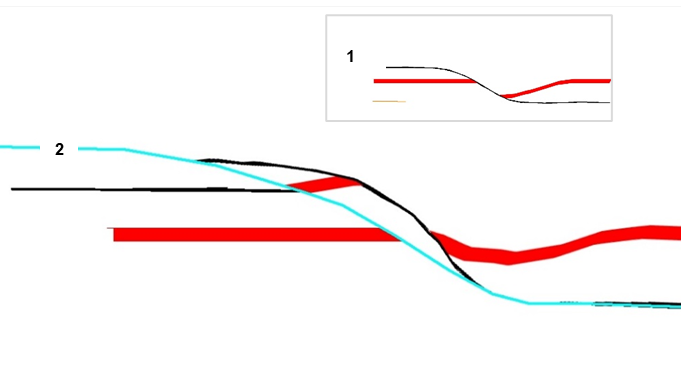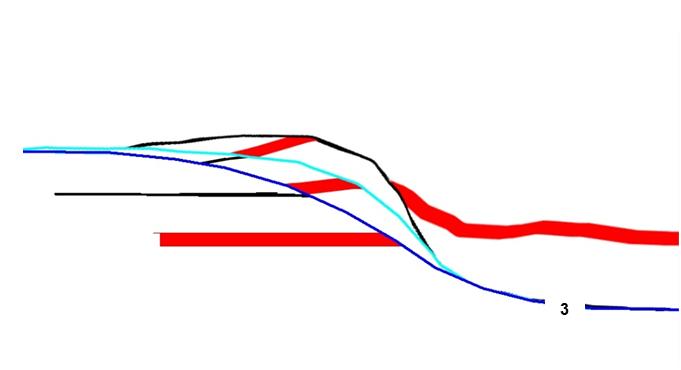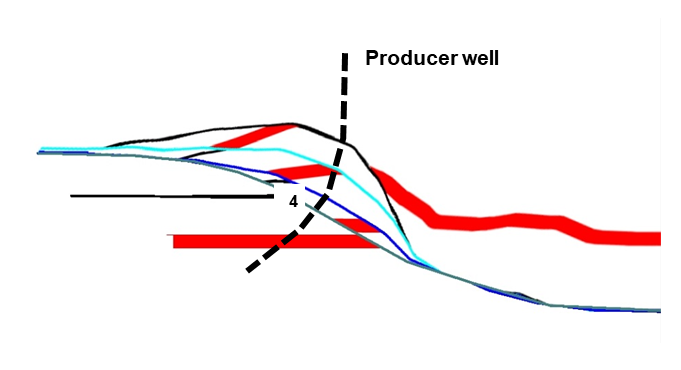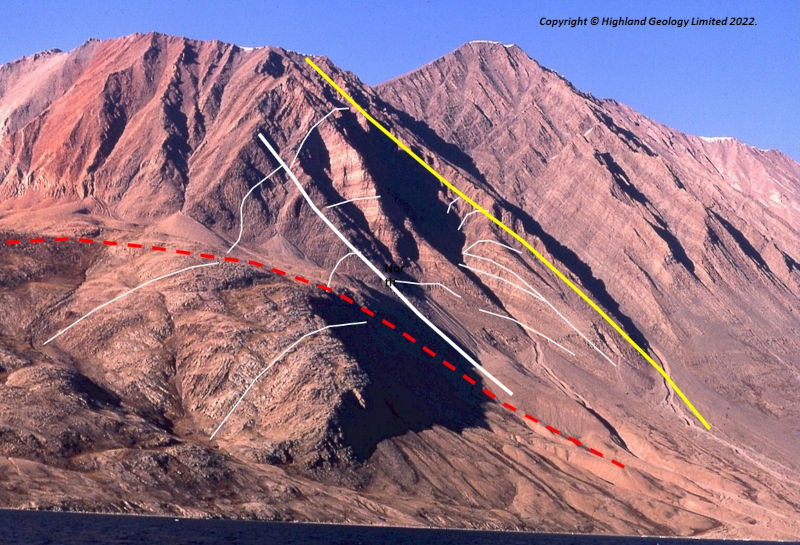Inversion fault 2, pale blue, breaks into the footwall of extensional fault 1, and now the only part of fault 1 which is still hydraulically pressured and moving is the shared flat at lower right, in some shale-dominant unit.
Passive Roof Duplexing creates structural highs which are excellent targets for geothermal producer wells


Pale blue 2 now stops moving and is replaced by new dark blue fault 3, and with movement on this fault whilst 1 and 2 are inactive we have some stacked footwall features appearing. Fault 1 is net-extensional, the other faults are wholly reverse.

Fault 4 in dark green propagates off the floor fault of the stack next, it has less heave. There are lots of examples of small steep faults like this in places like Clitheroe fold belt.
Models here are made with section balance software written by John Nicholson.
Repeated close-spaced footwall faulting in shortening of earlier extensional structure, forces a stack of thrust slices (duplexes) to develop and progressively climb, each slice stretches as it travels over an upward-convex new fault. The evolving hangingwall will fracture continuously as all previous slices of rock are passively flexed in the inversion. The new faults propagate downwards, each new one’s curvature imposes more stretching of the evolving stack above it, because the stack has to stay in contact: hence “passive”. Each new footwall collapse fault inflicts its own phase of stretching, and renewed axial fracturing on all of the overlying rock travelling across it. Brittle limestones and dolomites will be particularly likely to fracture.
So we can expect significant opening fractures to develop and thoroughly penetrate the hangingwall. A deviated well drilled through the stack will find a high concentration of interconnected faults.


Here’s a real-rock example of the duplex pattern and high degree of fracturing we are interpreting: Rodebjerg in the Old Red Sandstone of central East Greenland, we worked here in the late 1960s. Compare with the seismic profile across Gisburn Anticline, near Clitheroe.
This dramatic structure trends across the basin, it was generated by cross-basin shortening. Compare red faults, its very similar to Clitheroe-Gisburn.


